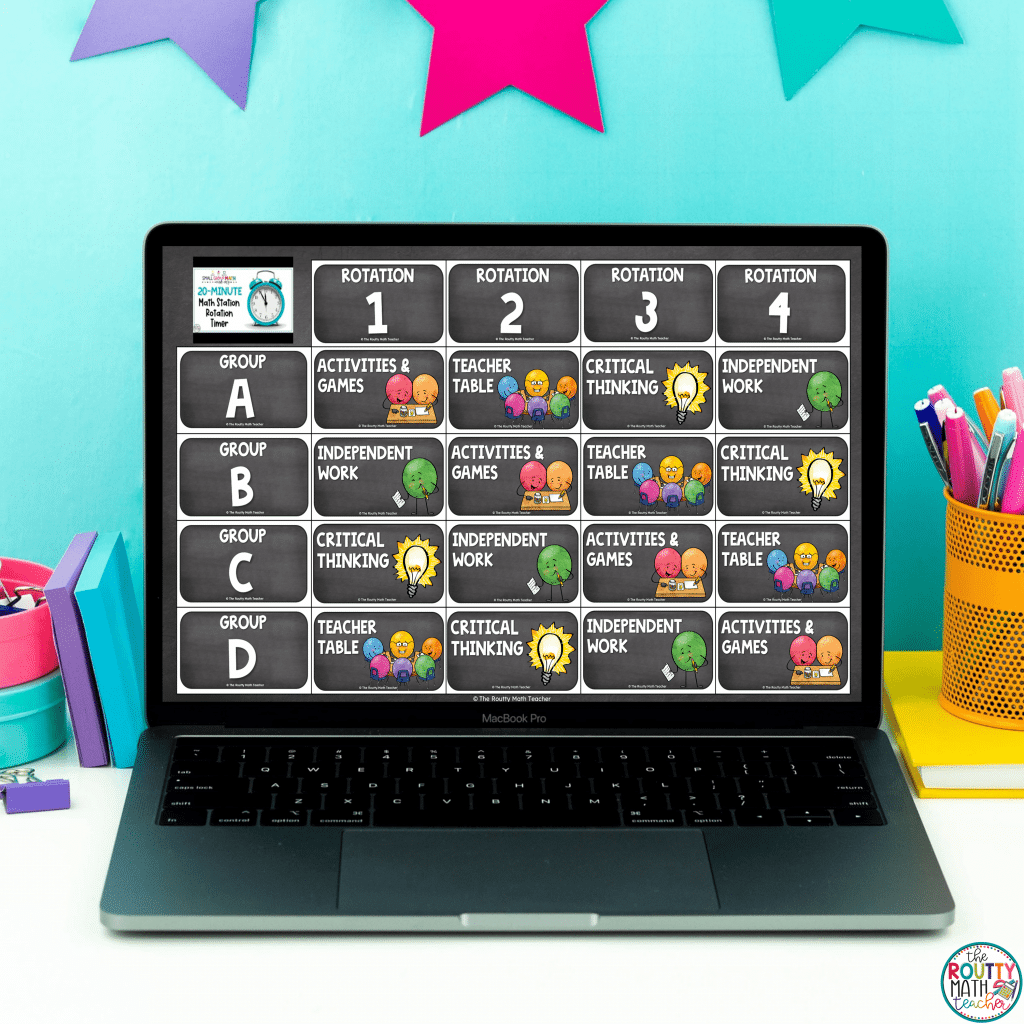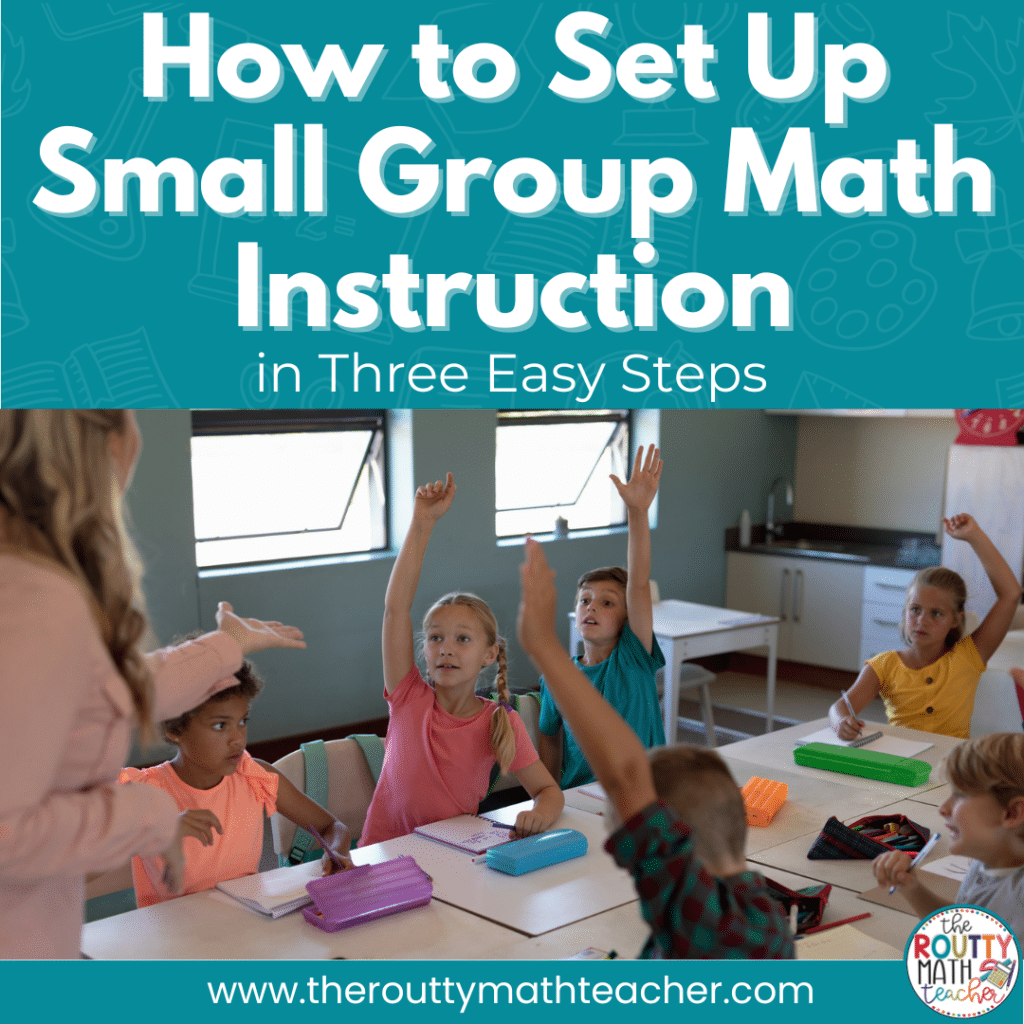Building an effective small group math program takes time and attention. In fact, it all starts in the first days of school. In this post, I share three steps to demonstrate how to set up small group math instruction.
“How do you keep all your students on-task during small group math instruction?”
This is the number one question I get from teachers surrounding using small group math instruction in the classroom.
For me the answer is simple. It’s all about how you start!
You have to take the time to build a strong structure before you start implementing small group math instruction effectively.
Small group math instruction has a lot of moving parts. From multiple station activities to guided math lessons to cooperative learning, there’s a lot that goes into an effective rotation.
So, how do I build my small group math program? 🤔
I’m so glad you asked. Read on friend, read on! 😁
The Key Ingredients of Small Group Math Instruction
Every successful small group math rotation has three key ingredients:
- Solid procedures and routines
- Reliable structure
- Engaging activities
These three ingredients are the key to creating a small group math program that runs itself and allows you the opportunity to effectively run a teacher table.
In fact, you will not be able to run small group instruction with an effective teacher table until your students can work independently, so you have to be able to manage your small groups successfully before implementing a successful teacher table.
In the following sections, I share three essential steps to demonstrate how to set up small group math instruction. Each step includes a “take action” item to help you get your small program up and running in no time.

How to Set Up Small Group Math Instruction
1. Choose the routines and procedures your students need to be successful with small group math instruction.
Sit down and make a list of the procedures and routines your students need to know to successfully participate in small group math instruction. This includes procedures and routines such as playing a game, getting a computer, getting materials, cleaning up/returning materials, turning in work, asking questions, working cooperatively, transitioning to the next station, and changing tasks when finished.
As you can see, there are a lot of routines and procedures students need to be familiar with to make small group math work. And, it doesn’t happen overnight. We must be intentional about teaching these routines and procedures and providing opportunities for students to practice them during the first days and weeks of school.
Take Action!
Make a list of your essential routines and procedures and plan to embed them into your first few units of instruction.
2. Set-up the structure of your rotations.
The next thing we need to do is set-up our system. This includes making critical decisions such as determining the number of rotations you will have and how many students will be in each group.
It’s also the time to think about your rotation themes. Note: You don’t have to have a set of established themes you use regularly; however, I discovered it was much easier for me to fill my station baskets when I knew what I needed, i.e. math game, computational fluency activity, computer activity, independent task, etc.
To maximize efficiency, it’s also a good idea to create a math workshop rotation board to program your activities and rotation order. This can be a huge time saver because once it’s set, students can refer to it throughout the rotation– even when the rotation spans several days.
Take Action!
Take stock of the activities you have available and build your structure around these items because it’s what you’ll use most often. Then, use these themes to design your math workshop rotation board.
3. Begin with two rotations and work your way up to more rotations.
When we begin building our small group math program, we go slow to go fast! In the beginning, we need to hold our students’ hands through the process to ensure they understand the expectations.
I recommend starting with two rotations and providing lots of feedback. Additionally, you want to simplify the tasks. For example, I might assign one group to do an independent task, while the other group plays a math game. This gives me the opportunity to spend more time with the group playing a math game so that I can provide feedback in the moment and ensure all the students follow the established expectations.
After using the two-station rotation model a few times, we add a third rotation to the mix. In this instance, I recommend using the same two rotations as before, math game and independent task, and adding on a new one, like computers. This gives students the chance to review the routines they already learned and allows them to focus on solidifying their understanding of the new routine– using computers.
Take Action!
Look at an upcoming unit of instruction and design a two-station rotation. After a few exposures, add a third station.
Ready to Get Started?
There’s no better time to get started on your small group math journey than the present! In fact, I can help you get the ball rolling in just two weeks time!
Download my “10 Days to Small Group Math Instruction that Works” guide using the form below.
Sound Off!
How do you set-up small group math instruction? Respond in the comments below.





One Response
Thanks for sharing this information. When I use to teacher behavioral self contained classroom I utilized my mom stations to keep the time moving students engaged and also added something new to the stations once a week.